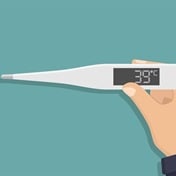
This blood test measures the amount of glucose in the blood. Because it is a random test, it means that it can be done at any time, under any conditions (either fasting or after meals).
Why is the test done?
To determine blood glucose levels at any given time, as part of the self-monitoring of diabetes.
How is it done?
For self-monitoring by patients, the test is usually done on a single drop of blood. This is obtained from an antiseptically cleaned fingertip, using a special 'click' device to puncture the skin. A drop of blood is placed onto a paper strip containing reactive enzymes. The strip is inserted into a small handheld machine, a glucometer, which then measures the amount of glucose present and displays the result on its screen.
In the doctor's rooms, a blood sample can be obtained from a vein, especially if other tests are to be done at the same time, needing a larger sample of blood to be drawn. This blood is sent to the pathology laboratory for accurate analysis.
Interpretation of results
Because this is a random test, and influenced by immediate conditions, the only really significant results are those which are very high or very low. For example, a high reading may occur because the patient has recently eaten: if the test were repeated in another hour, the result could be totally different. But there is no way of knowing by how much the result would differ. In the same way, a 'normal' result may not be correct, giving a false sense of security to both the patient and doctor. Abnormally high or low readings thus warrant further, more accurate glucose measurement.
Precisely because this is a test done under variable conditions, it is not recommended as the best way to monitor treatment.
Individual glucometers vary in their accuracy. Also, there is possible user error, as the machine must regularly be calibrated to give consistent results. Laboratory analysed specimens are more accurate and consistent.
Risks
The risks of blood sampling in general apply here:
- Excessive bleeding,
- Bruising, and
- Infection - especially applicable to diabetics.
Comment
For reliable glucose monitoring, it is recommended that blood samples be taken under controlled, consistent conditions, such after a 6 hour fast, or 1 hour after a standard meal.
(Dr A G Hall)




 Publications
Publications
 Partners
Partners















